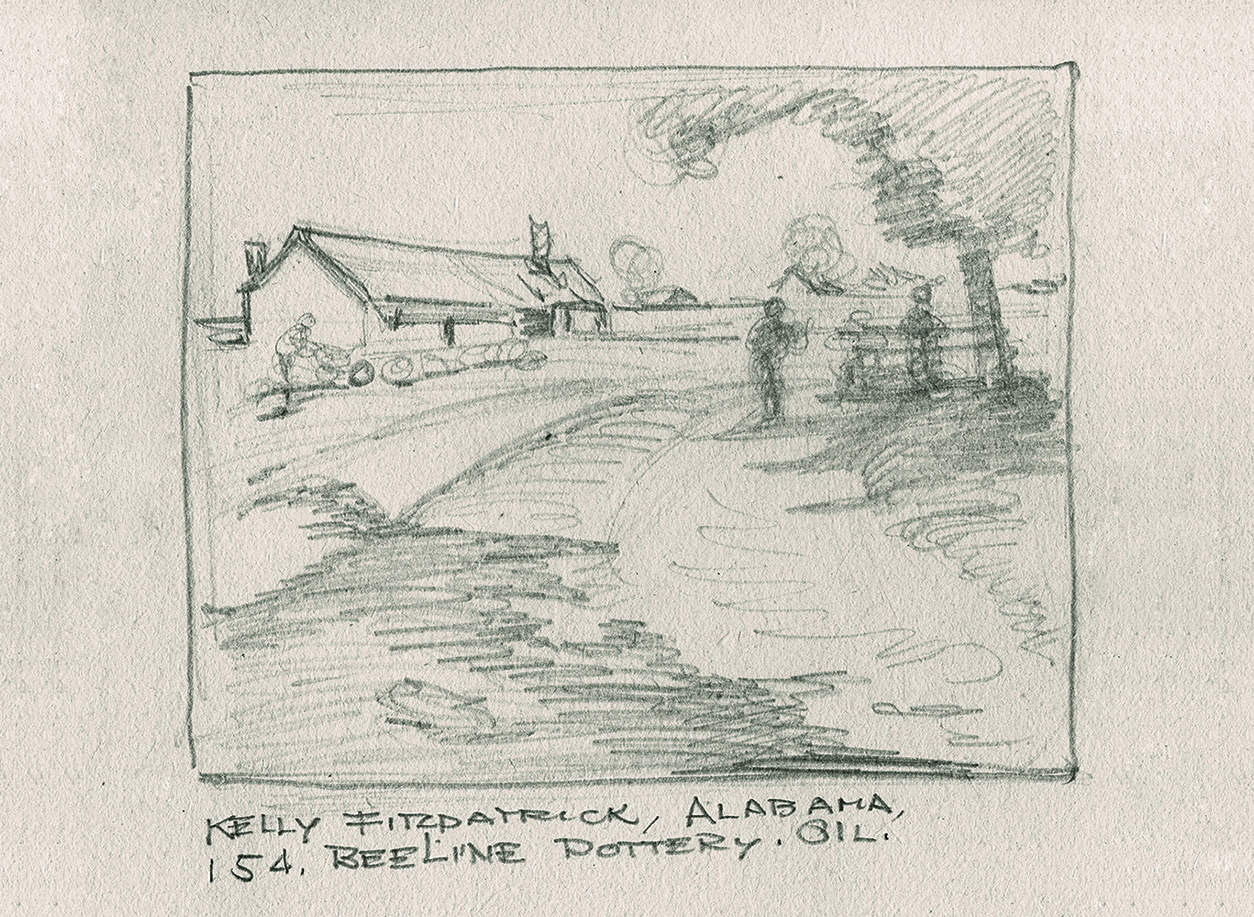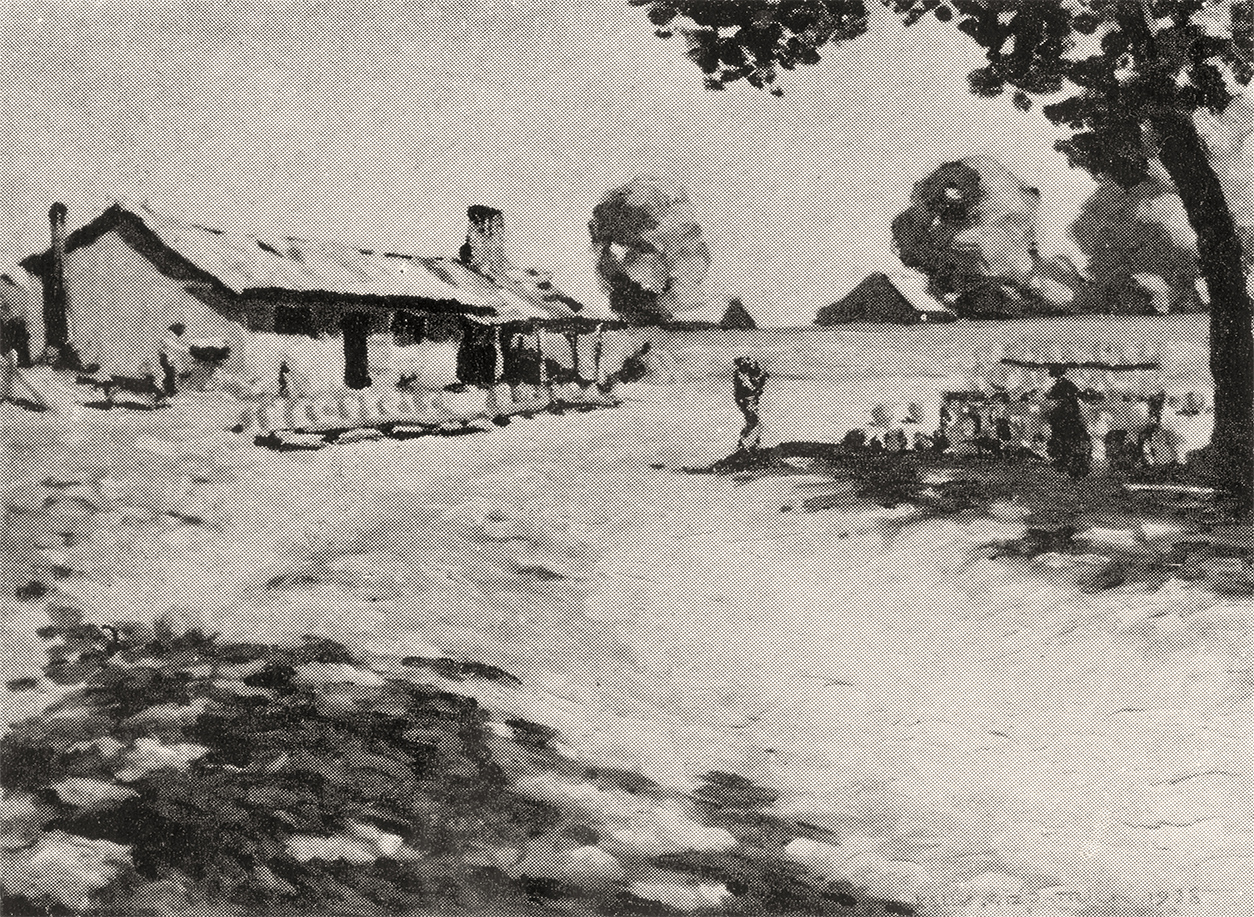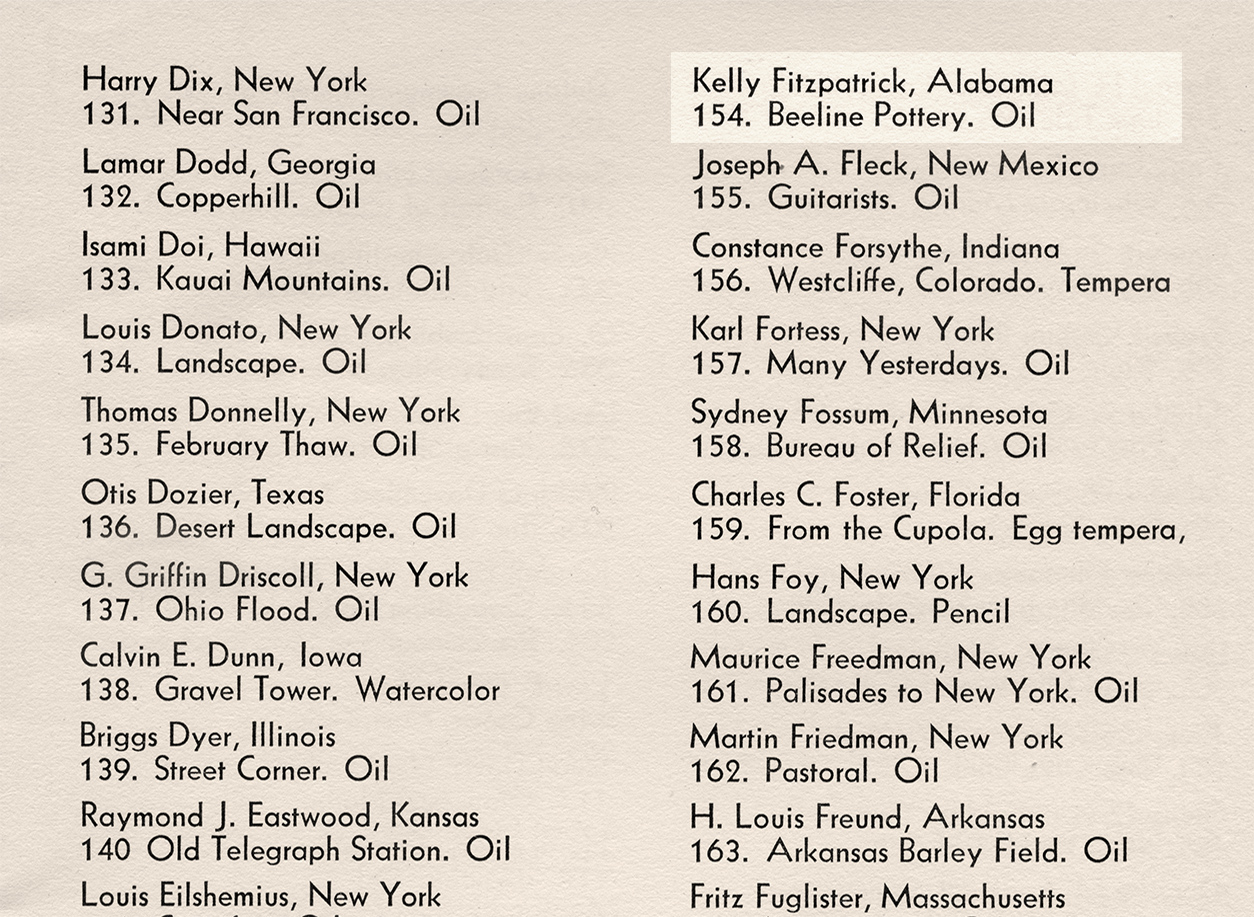1939 Fitzpatrick World's Fair Sketch Discovered: An original Fitzpatrick sketch, executed on one of the Dixie Art Colony excursions to nearby Beeline Pottery has been added to the DAC Foundation Collection. The sketch is numbered 154 and noted by Fitzpatrick as a study sketch for an oil painting he was to produce for the 1939 World's Fair held in New York. We have also obtained copies of books and booklets documenting that the painting was included in the American Art Today exhibition at the 1939 World's Fair. One of the supporting documents, a 342-page hardcover book titled American Art Today: New York World's Fair shows a black and white photograph of the actual painting titled Beeline Pottery with the corresponding number of 154. This book and the other supporting documents have been added to our DAC Archive.
Through additional research, we have also determined that several other Dixie Colonists and guest instructors were included. Joe W. Clancy, Lamar Dodd, Anne Goldthwaite, Mildred Nungester (Wolfe), and Karl Wolfe were among those included in the exhibition.
In the early 1900s, as New York City was emerging as one of the world's greatest cities, the site of 1939–1940 World's Fair was nothing more than a salt marsh, fed by the saline waters of Flushing Bay, which lies between the East River and Long Island Sound. The Flushing River ran south from the bay into Queens. The fast-growing populations of Manhattan and Brooklyn were heated by wood and coal, and the ashes were carted away by the Brooklyn Ash Company. Starting in 1909, the ashes were taken to a dump built just off Corona Avenue and called the Corona Ash Dump.
Still suffering from the economic impact of the Great Depression, the 1939 – 1940 Worlds Fair was part of New York City’s plan to lift itself out of the economic doldrums. The idea was the brainchild of former NYC police chief, Grover Whalen, who became president and chief promoter of the Fair. Working in tandem with Mayor LaGuardia, NYC Parks Commissioner Robert Moses, and an Executive Committee; the Fair organizers set out to create the greatest Worlds Fair ever. The site of the Corona Ash Dump was chosen as the site and within a couple of years, the dump was renamed and transformed into Flushing Meadow Park.
Fitzpatrick along with some of the other Dixie folks also exhibited in the 1940 exhibition titled Contemporary Art of the United Sates. Fitzpatrick's 1940 entry was titled Charcoal Burners No. 27. The 1940 exhibition will be the subject of a future post.
Dixie Art Colony Foundation, Wetumpka, Alabama





Comment(1)
Julienne Hillyer says:
August 1, 2016 at 5:11 pmMy favorite period of art! Beautiful informative website.